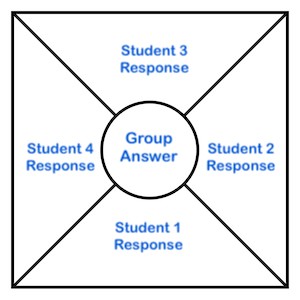4 Keys to Engagement in Social Studies Class
Every teacher is different, but we can all agree that we strive to create an environment in which our students feel safe and comfortable within our classroom and believe that they share ownership in the learning process.
We help ensure each student’s voice is heard by allowing them to share their perspectives, thoughts, and feelings while studying the content of our subject area.
I also believe we must provide students the opportunity to demonstrate their understanding of the content in the same way – by intentionally developing learning experiences that include choice and relevancy.
In this post, I want to share some of the ways I am making student voice a top priority in my Social Studies classroom – using teaching strategies that focus on engaging students with the past and allow them to demonstrate their learning in a variety of formats.
My Four Guiding Principles
My goal is to help Social Studies teachers intentionally plan for student engagement. The term “engagement” has many meanings, but here it essentially refers to the willingness of students to commit and put forth the effort to carry out a specific task.
Through trial, reflection and adaptation I have learned these four guiding principles of engagement produce the most success.
1. Plan with a Purpose
Teacher planning is one of the primary factors in being able to engage students in the study of History. As educators, our focus needs to include practices that can be integrated into instruction that will best interest and motivate students.
The planning and integration of these practices will fall under one of three phases of instruction:
- introducing content,
- exploring content, and
- assessing or evaluating a student’s understanding of that content.
In planning, my first step is to consider how to introduce new content that will hook students into wanting to know more.
Teachers can select a news clip of a current event to make connections about the past to the present, choose an article that provides multiple perspectives on an issue, or develop a simulation to expose students to new information and then ask for their reflection.
For example, the concept of Power is an important theme in my class. To introduce it, students participate in a simulation in which there is a ruler (teacher) with the ability to control wealth and people (students) who are responsible for producing, striking, or rebelling. By participating, students are able to experience this concept directly, hooking them into wanting to know more.
In exploring content, consider activities that promote active learning rather than passive learning. In my classroom, the exploration of Social Studies content includes discussions, investigations into decisions made by past historical figures, and the creation of products using the content they’ve been exposed to in previous class sessions.
One of the more controversial Presidents is Andrew Jackson. To actively explore his policies, we put him on trial (see my class documents). Students are separated into prosecutors and defense attorneys. In these roles, they investigate primary and secondary sources to gather evidence to support their position. In doing so students create arguments, counter arguments, and questions to ask their peers. The result is a courtroom debate that does not disappoint!
No teaching plan is complete without a design for assessment and evaluation. Does the method you plan on using provide students with flexibility and choice in how to demonstrate their learning? Does it allow them to communicate what they learned? The answers to these questions are critical in strengthening engagement and student voice.
2. Connect History to the Present Day
A student’s ability to relate to Social Studies content will increase or inhibit their engagement and their willingness to invest time and energy in learning.
Many teachers work to create connections between the past and the present. In addition, I set out to design activities that help students use the content in a more meaningful way.
In considering how to help students connect with content, it’s vital that we communicate how decisions made in our collective past connect with the present day. For example, in the creation of the Bill of Rights, our Founding Fathers developed the Second Amendment, giving American citizens the right to bear arms.
A well regulated Militia, being necessary to the security of a free State, the right of the people to keep and bear Arms, shall not be infringed. – Second Amendment, U.S. Constitution, Ratified 1791. (Source)
In helping to make connections, a teacher can use the historical events surrounding the Bill of Rights to explore the present-day contentious debate over the Second Amendment’s intentions through a student-led Socratic Seminar (see this ReadWriteThink strategy guide.) Through this approach, students can become more engaged and connected with what might otherwise seem to be an isolated, long-ago bit of history.
3. Encourage Decision-Making & Autonomy
The power shared to students to make decisions helps them become more invested in their work. The ability for students to choose how they learn History or demonstrate their learning of History is ideal for engagement and for highlighting student voices.
When instruction is direct with little opportunity for students to ask meaningful questions or discuss the content in more depth, they lose interest. Choice and flexibility in the ways we invite them to demonstrate understanding have the opposite effect.
Consider, for example, using the R.A.F.T. Writing strategy. It provides students with the flexibility to choose a role, audience, format, and topic to demonstrate their understanding. The use of such a structure, even with a topic assigned by the teacher, can allow students to make their own decisions about their learning.
I had assigned a R.A.F.T. writing project to my US History students; when they were turned in I had 1 extra. That’s right. One extra. In addition to his graded assignment, a student actually created a SECOND project and turned it in. For funsies. That’s when I knew I had a killer assignment. – Teacher/tutor Louisa Porzel
The format for one student can be the creation of a speech while another student may choose to develop a commercial. In both situations, students are given the autonomy to choose what works best for them. This gift of power usually has favorable results.
4. Develop Collaborative Learning
In developing a collaborative learning environment, a positive student-teacher relationship is essential. This typically includes frequent interaction with students during class, using a positive tone when giving feedback, respecting students’ different perceptions, and empathizing.
This relationship also helps students know their voice and learning needs are at the forefront of the class. Moreover, this relationship helps Social Studies teachers as we study controversial issues including enslavement and racism.
This connection sets the stage for peer-to-peer collaborative learning opportunities as teachers and students build a culture of trust. Collaborative learning is synonymous with the development of higher-level thinking, increased student responsibility, exploration of multiple perspectives, and lifelong skills.

After each student records their response, ask them to share out and then utilize those responses to develop one group answer. The activity emphasizes listening to multiple perspectives and collaboration, and the Social Studies classroom is the perfect setting for this type of learning to take place.
Collaborative learning activities and projects are essential pieces of the engagement puzzle. Some teachers are uneasy about stepping out of the teacher-driven lecture model – whether it be time management or student management. But with solid planning and trust building, we can create a safe and positive environment where activating and listening to students is the norm, not just an aspiration.
Moving Forward
By utilizing these guiding principles, teachers can support student engagement in the study of Social Studies. Through purposeful planning, making content relevant to students’ lives, allowing for autonomy, and developing collaborative learning environments, we are building a foundation for student voice to be at the forefront.
As we move forward, it’s not that we have to start over but refine traditional practices where student voice is absent and reimagine our classrooms to fit the needs of students growing up in today’s world.
Resource: This guide by MiddleWeb blogger Anne Jolly has great tips for helping students develop group work skills across the content areas.
Ron Litz is a 7th grade U.S. History teacher in Scotch Plains NJ with more than a decade in the classroom. He was named a New Jersey Exemplary Secondary Educator in 2019 and holds a BA in History and a Masters in Educational Leadership.
Ron enjoys developing student-centered activities that promote cross-curricular learning for students, with a special focus on ways to enhance student voice in the classroom. See Ron’s Edutopia post on virtual/hybrid student discussions, and most recently, Planning for Student Engagement.
Update (6-15-24): After spending several years as the vice principal role, Ron was recently appointed Principal of Bloomingdale Avenue School in the Cranford (NJ) Public School District.






































Hi Ron, I found this blog a great read! I am a middle school history teacher in Garwood NJ so we are almost neighbors! Your part on connecting history to the present day is something I try to focus really hard on. Students are more engaged when they are hands on and/or able to connect the information to themselves. With history, students often believe that it has no affect on them and it’s just facts of the past that are boring. Bringing the subject to life and having them feel the impact of every day history on them is a goal every social studies teacher should strive for!